
Has boost cooling gone beyond the intercooler?
Dodge has done it again – it’s introduced a car with insane power to the public that’s literally called a Demon. However, even if you are well versed turbo technologies, you’re probably wondering just what on earth its ‘SRT Power Chiller’ is and how it exactly works. We’ll explain that as well as the how’s and what’s of intercoolers in this article.
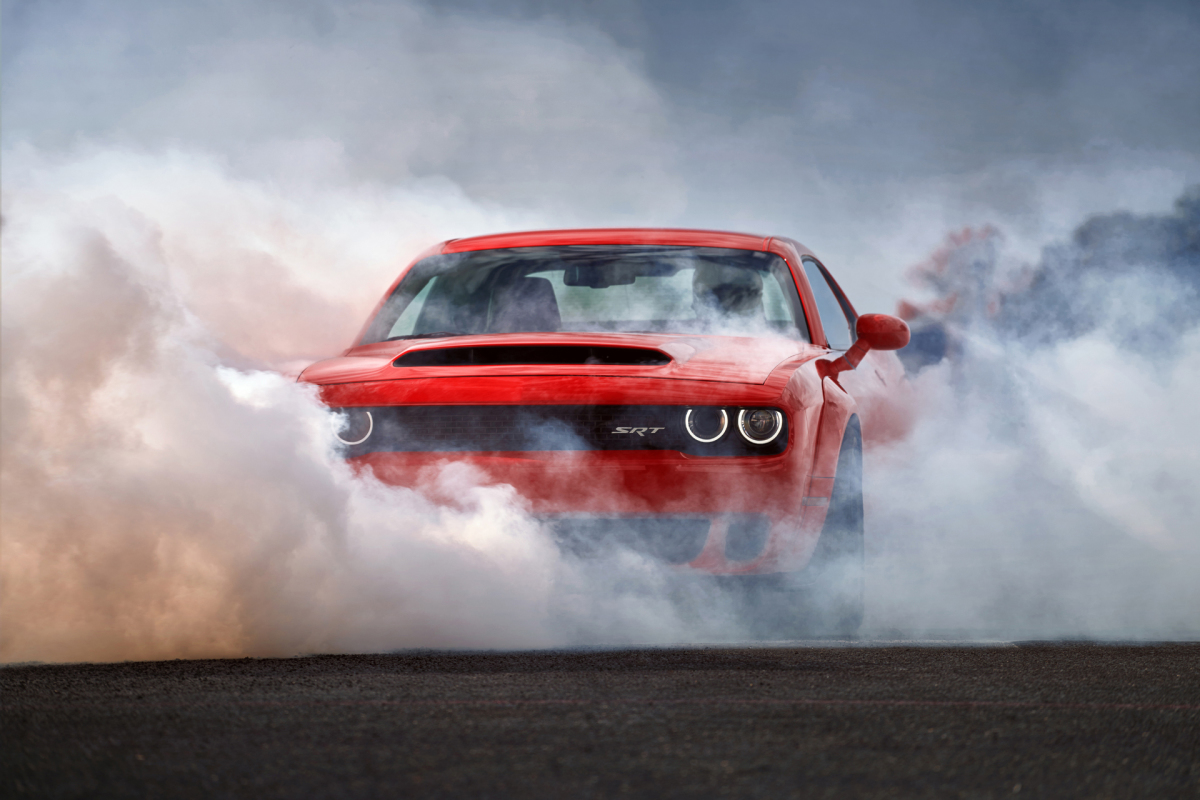
The idea of the intercooler is that it’s going to reduce the temperature of the boosted air charge before it reaches your intake manifold. There are two ways to get this done, by either air-to-air intercoolers or air-to-water intercoolers. Keep in mind, if you’ve been running an inter-cooled and turbo or supercharged engine, you’re probably aware of what these are. First, we’ll start with the simplest design: the air-to-air intercooler.
Air-to-Air Intercooler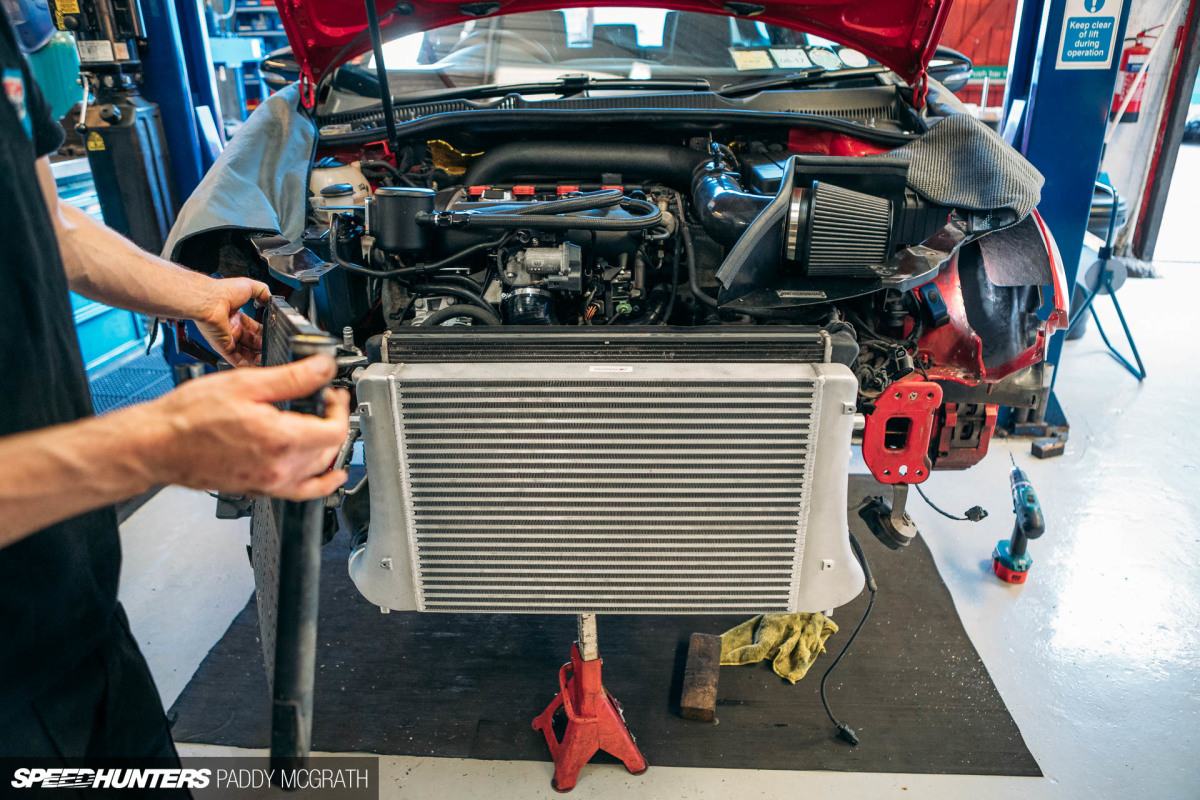
An air-to-air refers to how the intercooler cools the charged air by using the core as a heat sink. Charged air passes through the tubes of the intercooler while ambient air flows over the tubes to remove the heat the charged air transferred to the intercooler tubes. These are further helped by the little fins or plates between the tubes.
There are two distinct types of intercooler cores (the center portion where the cooling takes place) – tube-and-fin and bar-and-plate. Tube-and-fin style is set up very similarly as your transmission cooler or engine oil cooler where there are extruded oval tubes with fins pressed into place. This can lead to a lighter intercooler package since extruded tubes will be smaller and stronger, but it is more prone to road damage. Even worse is that it will start to lose sealing as you increase boost pressures. You’ll also get a smaller core as there is space lost from sealing between the tubes at the end tanks.
Bar-and-plate, on the other hand, is far stronger and more efficient at cooling charge air. You get more area because you braze or weld the core rather than rely on a large metal seal that reduces its actual core size. It’s also stronger thanks to using bars and plates over tubes to create the intercooler core. This not only reduces the chances of boost killing road damage, but can usually take far higher boost pressures than tube-and-fin. However, it’s heavier.
Air-to-Water
Then there is the air-to-water intercooler and it is a super-efficient design. Water is a far better way of transferring heat away from an object, and you can use a smaller intercooler than you would have needed over the air-to-air intercooler. This reduces losses in boost pressure as you now have a shorter route to the intake and you can make more power.

Not only that, but some designs allow you to use a small chest to fill with ice and allow the water to flow through, further cooling boosted air. You are also less reliant on keeping your vehicle moving since you don’t need air flowing over the intercooler to keep it cool. However, not only is this system heavier thanks to all the components involved (water pump, water tank, water, and ice chest or heat exchanger for the water), it’s also harder to package over an air-to-air. Despite that, air-to-water intercoolers are the preferred method of OE manufacturers that do use inter-cooling on their supercharged efforts, including Dodge and the Challenger SRT Demon.
The SRT Power Chiller
What the Demon does differently, though, is how it further cools the liquid for its supercharger’s integrated intercooler. This is where the SRT Power Chiller comes into play. Now famously, the Power Chiller says that it uses the air conditioning system to cool the boosted charge air. It does this by passing the intercooler’s coolant into a cooler that reduces the temp of the coolant further than what’s possible with a regular heat exchanger.
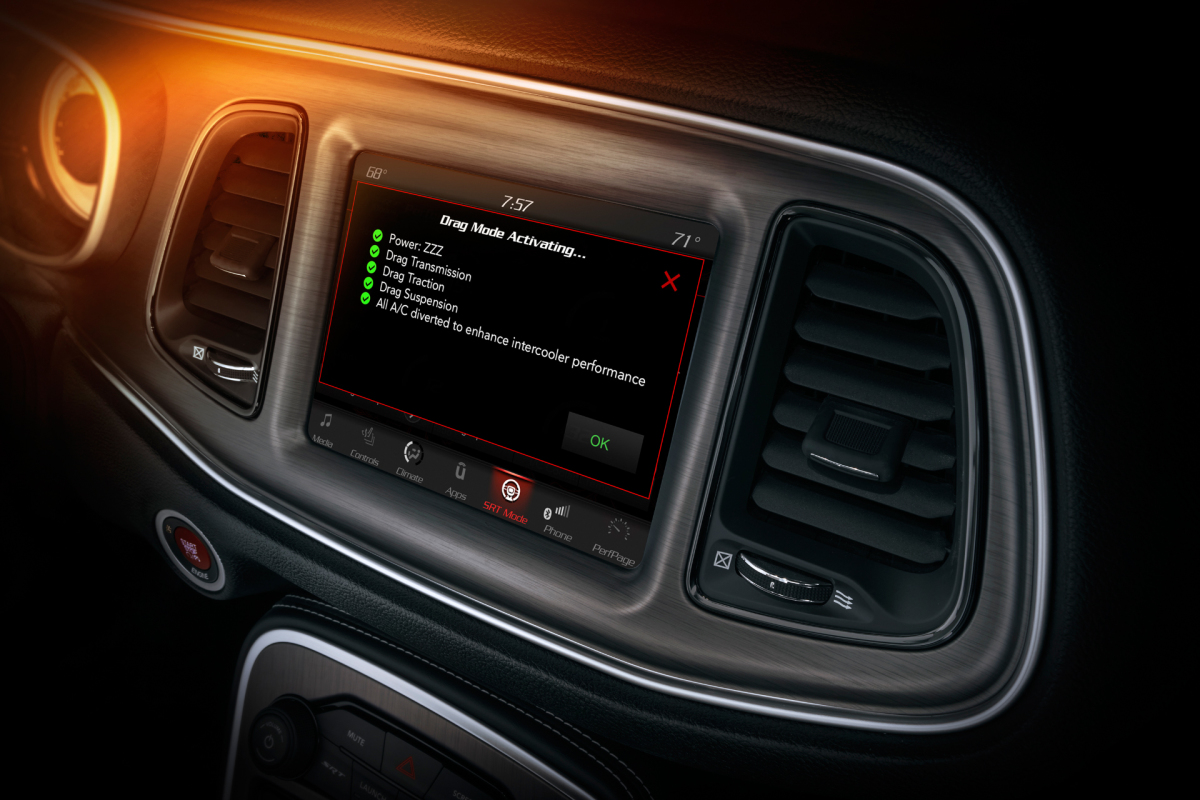
Ravi Dolwani from CSF Radiators explains further, “The water runs through a front mount heat exchanger which cools the charge air before it enters the engine. Then, the water goes into Power Chiller unit to further cool that water, which is very cool because of the Freon from the AC unit – this would further reduce the charge air temps before heading into the engine block.”
That chilled coolant is then sent to the supercharger’s intercooler and reduces the boosted air a further 18°F (-7.7°C) than what the ambient temperature would be with just the standard heat exchanger. This allows the Demon to run 14.5psi of boost with the 9.5:1 compression ratio of the 6.2-liter Hemi, and produce up to 840hp on 100-octane (or 808hp with 91-octane).
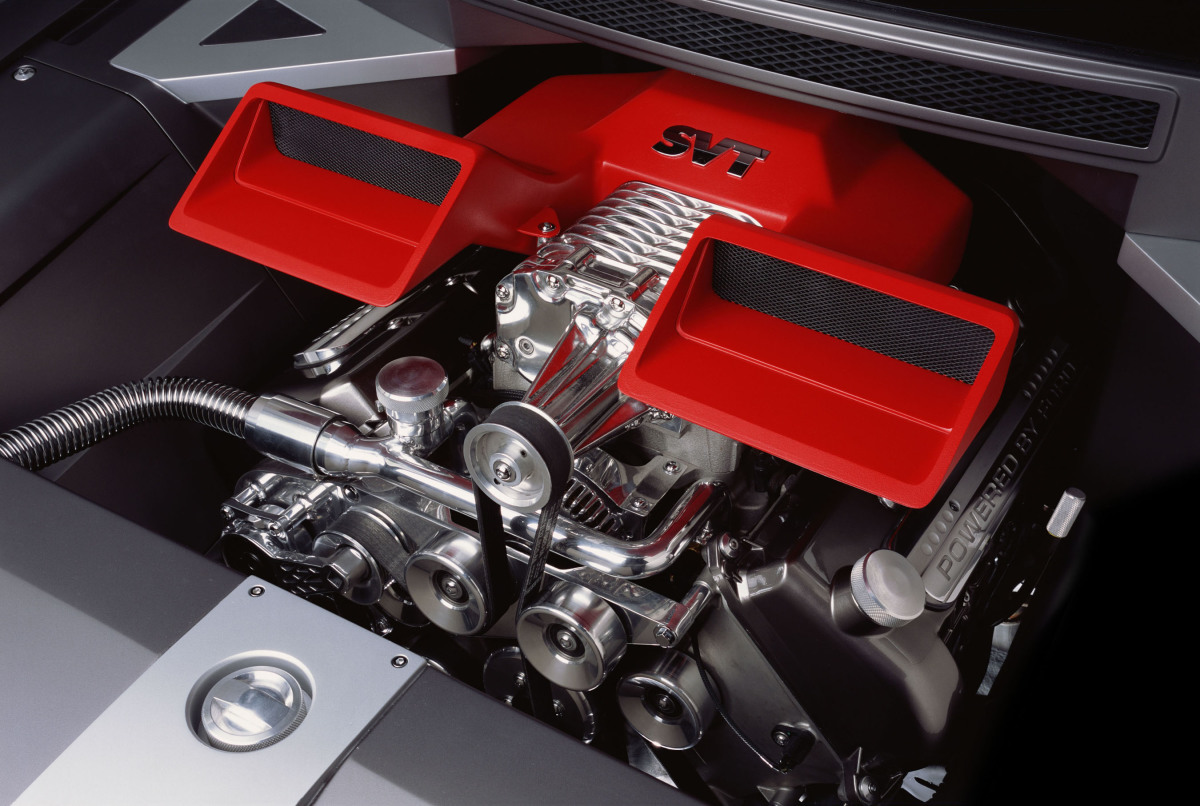
This isn’t the first time an OE has thought about using the HVAC system to cool boosted air; Ford did the idea twice for two concept cars: the 1994 Mustang Mach 1 Concept and the 2003 F150 Lightning Concept. However, Dodge is the only manufacturer between the two to bring it to fruition in the Challenger Demon. There were also two different aftermarket solutions from two companies called RX Performance and Active Interchiller. RX Performance seems to not be around anymore but Active is and focuses mostly on US domestic cars. So, it’s out there if you run a LS-engine or a GM air conditioning system.
DIY It?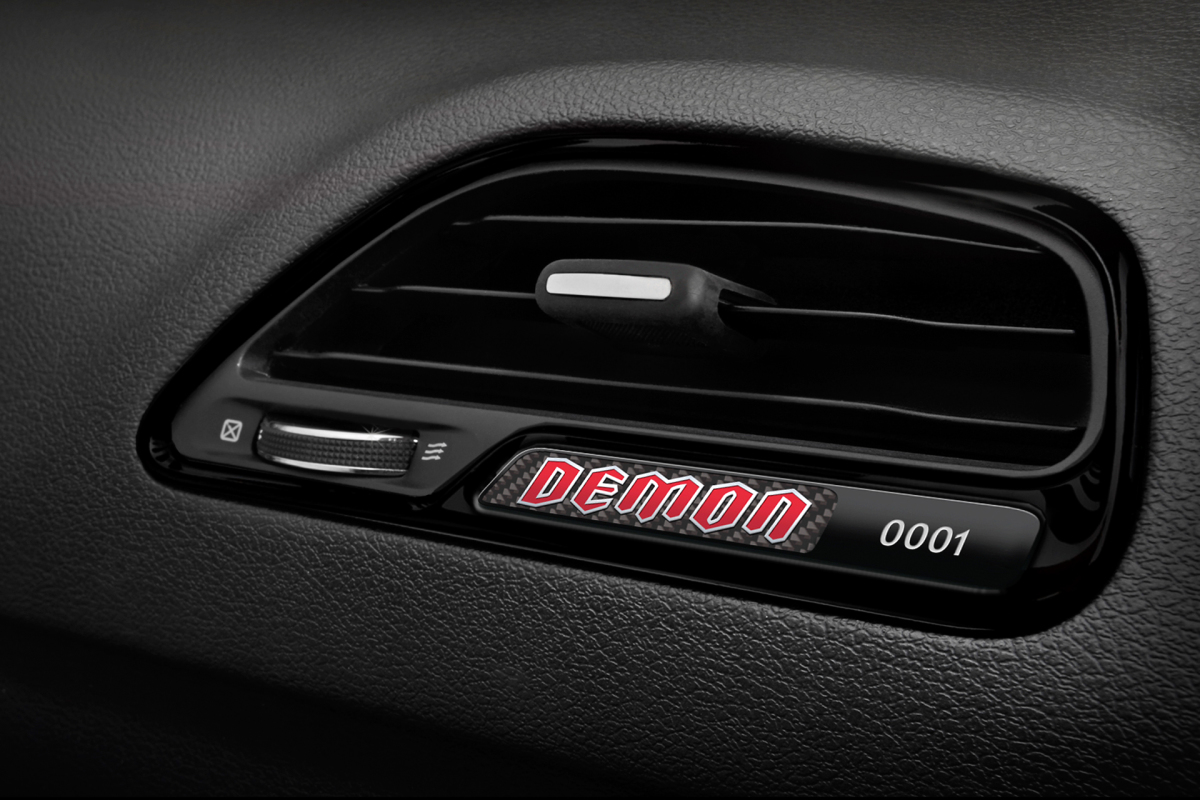
If you want to homebrew a kit, well, there’s quite a large catch. It’s not as simple as grabbing a AC system from another car and installing the fittings to a cooling block for the coolant. I’m not even talking about the machining or getting the lines made for the AC system. Unfortunately, it’s the Freon. Most automotive parts stores are not going to sell you a bulk tank of Freon (even HFC-R134a) without a 608 or 609 EPA certification here in the US. The 608 is for stationary stuff like home AC units and refrigerators while 609 is for automotive. Those small cans that you see on store shelves are under the EPA limit and is why you can buy them without either certification.
So, why is that a catch? Why would you need to buy a bulk amount of Freon to fill the system properly? The way a technician fills the AC with Freon is by weight. After the tech has injected the AC lines with PAG oil on the low-pressure side (the side with the blue-colored cap or bigger lines) of the system, he or she then begins to charge the system and starts by placing the tank of Freon on a weight scale and tares it (zeros the scale with the tank on it). The tech then opens the low side valve to charge the system while the engine and AC system is running, watching the scale to see when it says the manufacturer’s recommended weight of Freon has filled the system. The valve may be closed as pressure builds up and opened again once it’s settled as the pressure will prevent the tank from properly filling the system. That is why it’s done by weight and not by pressure.
Conclusion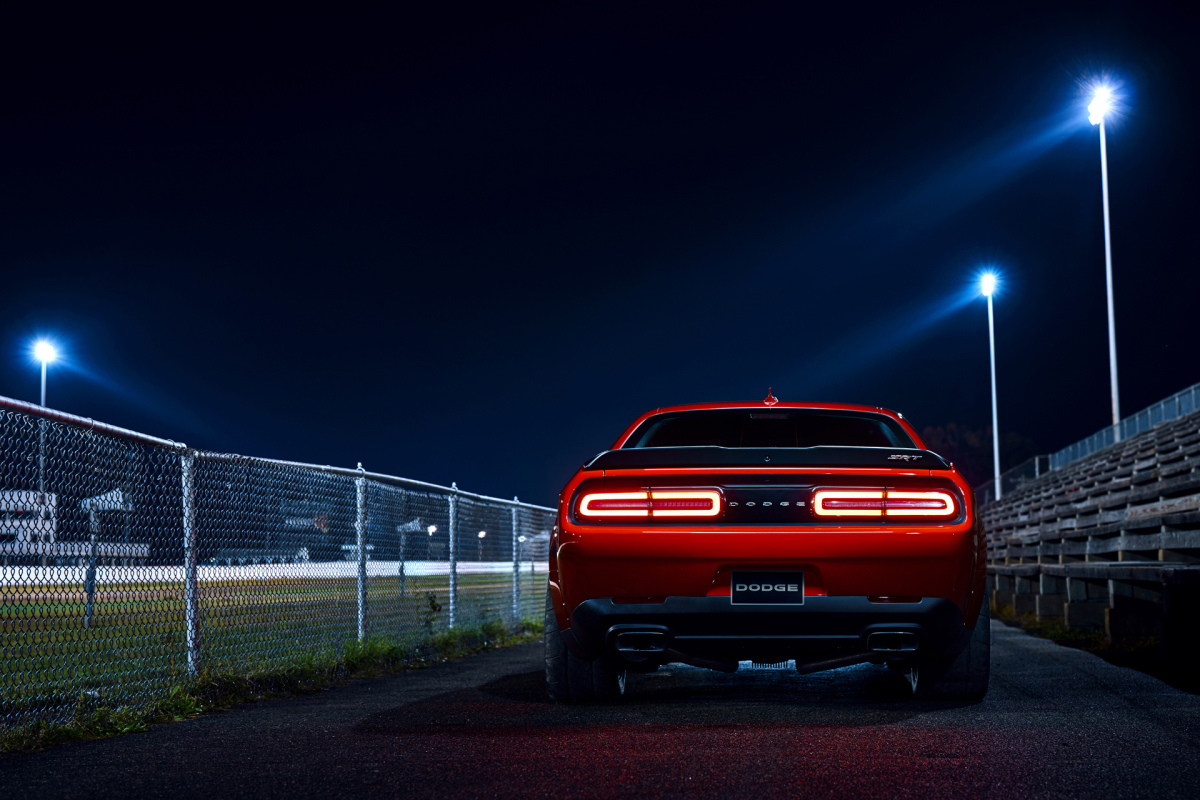
While the intercooler is the only way to cool boosted air to make it denser, the way that goal is achieved is just as different as supercharging and turbocharger are. Air-to-water intercoolers, though complicated and bulky, are the most efficient way of achieving that goal. If you want to make it even better, the HVAC system in your car or truck may provide that solution for the OEs and yourself, provided you are certified to handle Freon. Otherwise, you’ll have to either buy a car or truck with their own Power Chiller or have someone else put in a kit for you, if you can find one.
As OEs find more tricks to pull out more power from the internal combustion engine, we’ll start to find more cars and trucks that can put down some incredible power numbers from the factory that only the aftermarket could once achieve.
Justin Banner
Instagram: jb27tt
Facebook: racerbanner
Twitter: RacerBanner

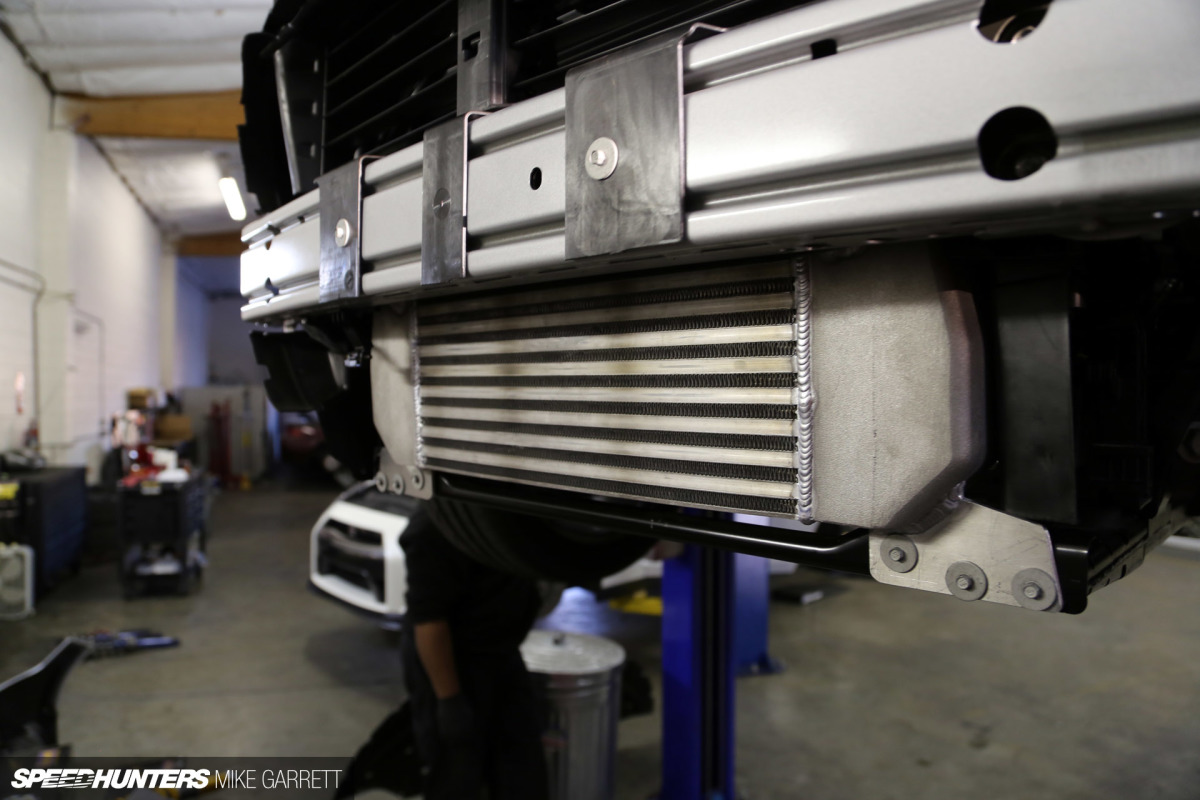
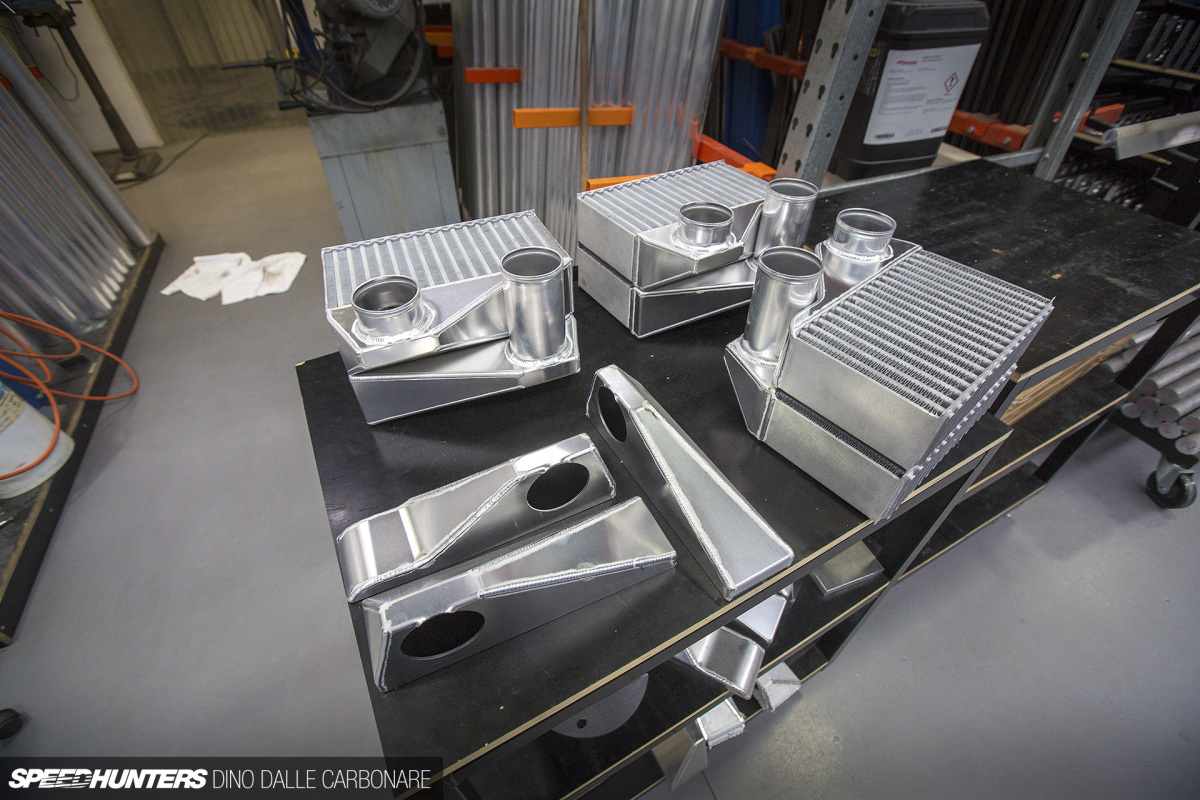
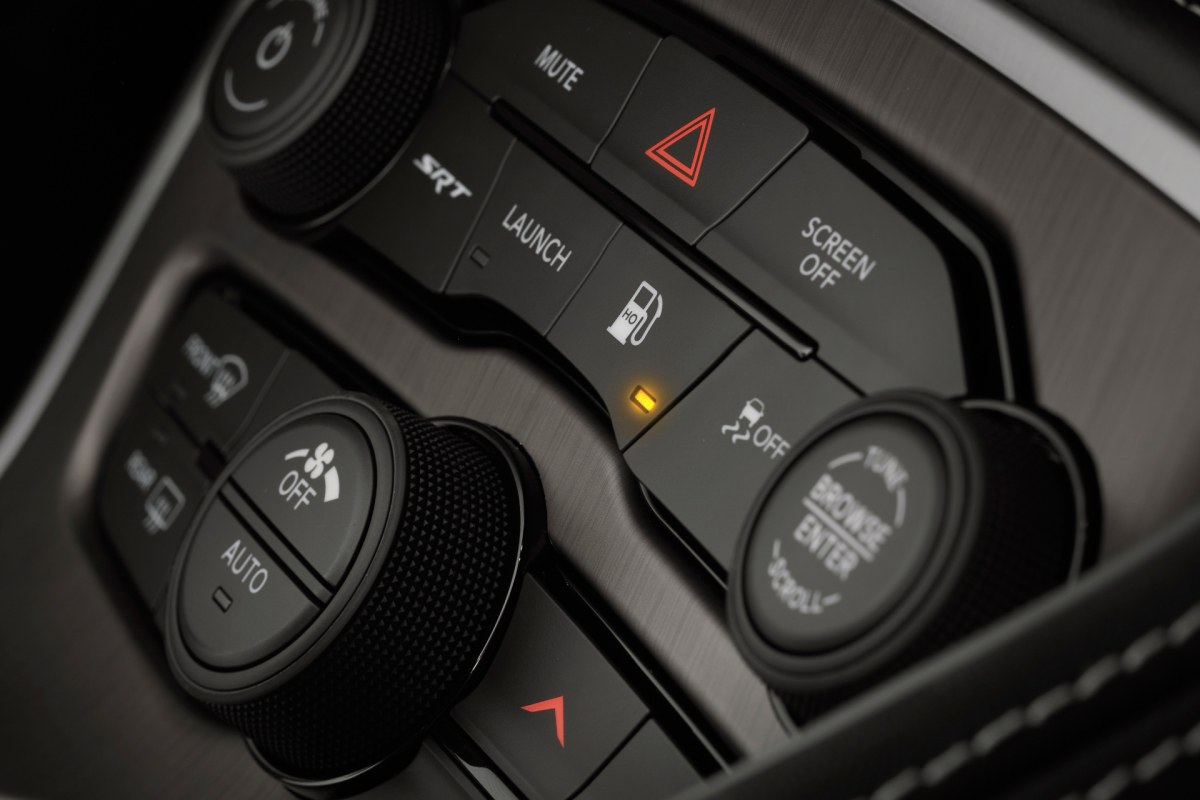
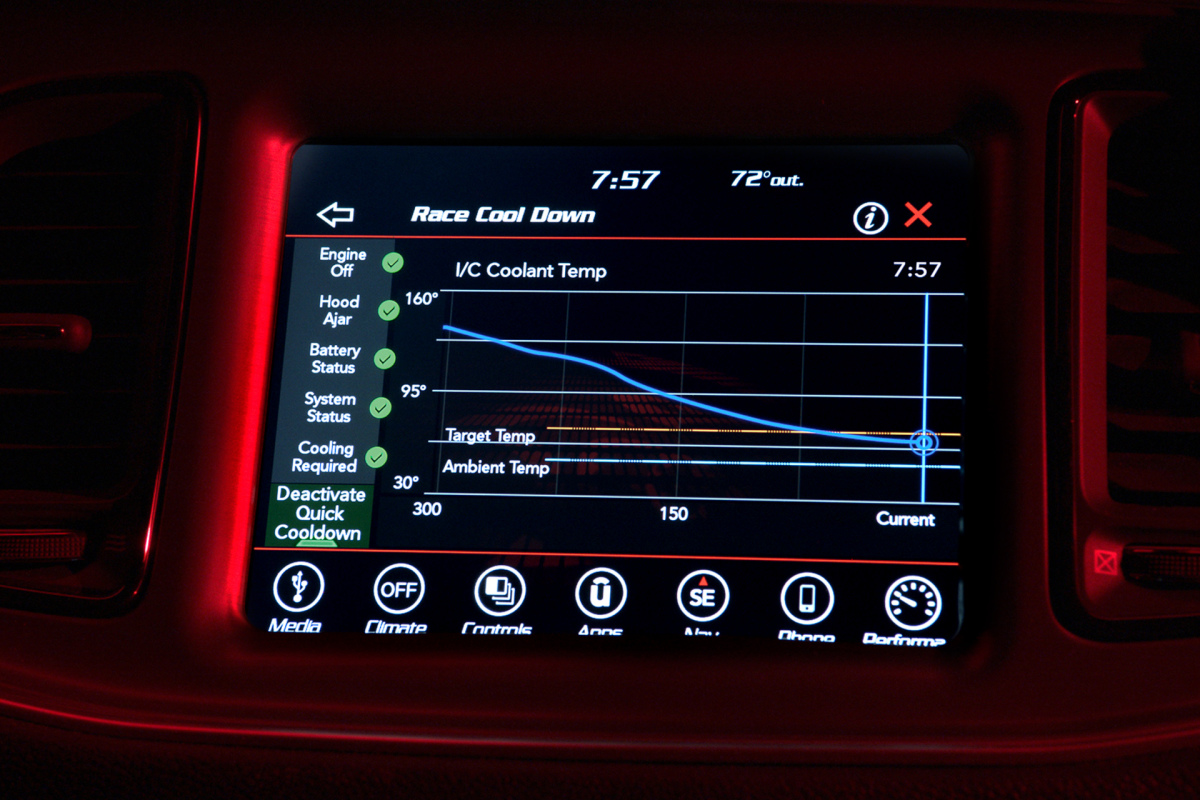





I wonder what is the benefit of that 7 degrees on the HP side. does it worth all the complication going on, or is this only a sales strategy?
I think its more about preventing pre detonation than gaining some small amount of hp
The general rule of thumb is for every 10 degree drop of intake temp you gain about 1% hp. At least with a stockish LS engine. Not sure if scales linearly with higher hp (boosted) applications.
They're just so ugly though, it's hard to give Dodge the nod for these hellish variants they keep making. That's just me though; a bazillion performance cars out there, and if I were to buy one it wouldn't be one that looks like a toy.
What about an electric cooler serpentine inside intake tubes ??
Are you talking about a peltier device?
Kind of ... I don´t know how to explain, its a kind of "helicoidal" serpentine tubes that run cold liquid inside to remove air heat.
Ok, that's not a peltier device, which uses electricity to create a cooled surface on a heatsink. What you're describing is still an air-to-liquid heat exchanger.
Informative article, I have seen LS motors with Interchillers in use here in Australia, pretty surprised to see it being used OEM though.
As a technician with a refrigerant licence (ARCtick in Aus), I think the R134a would be the easiest part of DIY'ing a similar system. Most licensed repairers would happily recharge such a system if someone made one.
I don't look on this system (in the Demon) as an active charge cooler - more a mechanism of more quickly pulling heat out of the water after coming off the throttle, and over chilling the water in advance (like firing a CO2 fire extinguisher at an air to air IC). Driving an AC compressor takes engine power - I stand to be corrected, but I haven't seen anything that is unique on the Demon to indicate that the power gain due to the cooler air is more than the AC drive loss. This system in the Demon turns off above a certain RPM point which removes the load on the engine. If the Demon were being road raced (as opposed to drag raced) I'd expect the AC wouldn't have much chance to kick in and pull heat out of the water.
I think it still a good idea, but in general it is being misrepresented/misunderstood about what it is actually doing
I think the purpose is to reduce intake temps before the run (i.e. during staging/waiting for your turn at the lights).
In theory, I like the idea, but Dodge using this technology from the factory strikes me as more of a way to market the Challenger Demon.
This subsystem has already been mentioned in Jalopnik, Speedhunters, and other sources. Nothing like free marketing. Someone in FCA's marketing department knows something.
Personally, I don't think that water to air is more complicated. In most cases it can be simpler as all the air has to do is pass through a cooler that doesn't need direct airflow. On my AE86 it was easier to do a water to air than air to air as
far as packaging goes.
More plumbing and components than air-to-air, but packaging and response wise it might be worth it.
Regardless of if it actually works or if it is worth the price tag, there is one more thing to consider in this car's favor. It is bound to become a collectible. 1. It's a muscle car even if it is a modern one. 2. It's a performance variant. 3. It is the first car to run A/C cooling of intake air as a standard option.
Even if the system doesn't work well, these cars will become super valuable in 35+ years. Just look at the old water/meth-injection systems from the 50s/60s.
Seriously CSF radiators was made in indonesia? Wow, proud as indonesian
Seriously CSF radiators was made in indonesia? Big Wow, proud as indonesian
I'm no mechanical or chemical engineer so, can someone explain if you need to add Freon by weight, why can't you just use multiple cans of the smaller one instead of buying bulk? Can the process not be stopped? Would the pressure build incorrectly?
-Alex
Mostly because most systems, when completely empty, are in the 1-pound-plus range, which means you would need multiple cans and have to tare for each can and that can lead to in consistency. The biggest can you can legally buy without a certificate is 20-ounces.
For example, a 2012 Honda Civic needs 1.21-pounds to fill, so a single 20-ounce can do it. However, if you are refilling a Dodge Challenger that takes 1.56-pounds, that takes more than a single can.
Overcharging an AC system can blow out seals, damage filters that lead to compressor damage, and cause leaks that eventually drain the compressor of Pag oil and leads to failure and complete component replacements.
Also, running the A.C. on a dragstrip or in the staging lanes is a good way to get kicked out.
Unless something changed very recently, AC was ok in the staging lanes but not so while running. If you're not familiar with drag racing, water and slicks don't mix well, even with VHT sprayed down on the surface. Even though it's not much coming out of the evaporator core, it is while sitting at the starting line as it pools up. Even if you don't lose control at the start because of it, the guy with slicks and a spool after you might.
Though, I wonder if they have a way of collecting the condensation from the Power Chiller, especially since it routes Freon away from the evaporator core. Dodge hasn't been very forthcoming with additional details on the system.
I was hoping to see something about is the hp gained worth the loss of power from running the air con unit?? or does the unit not have to be running (hard to imagine)??